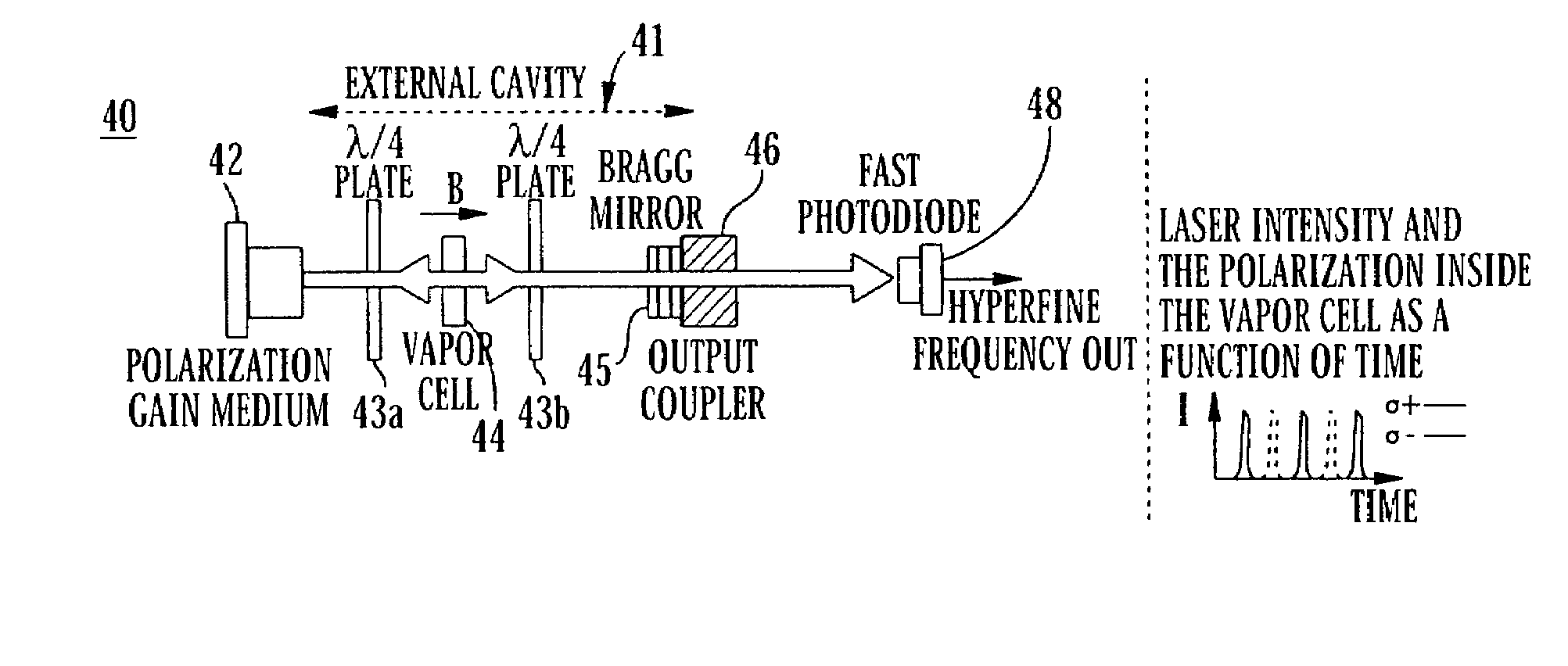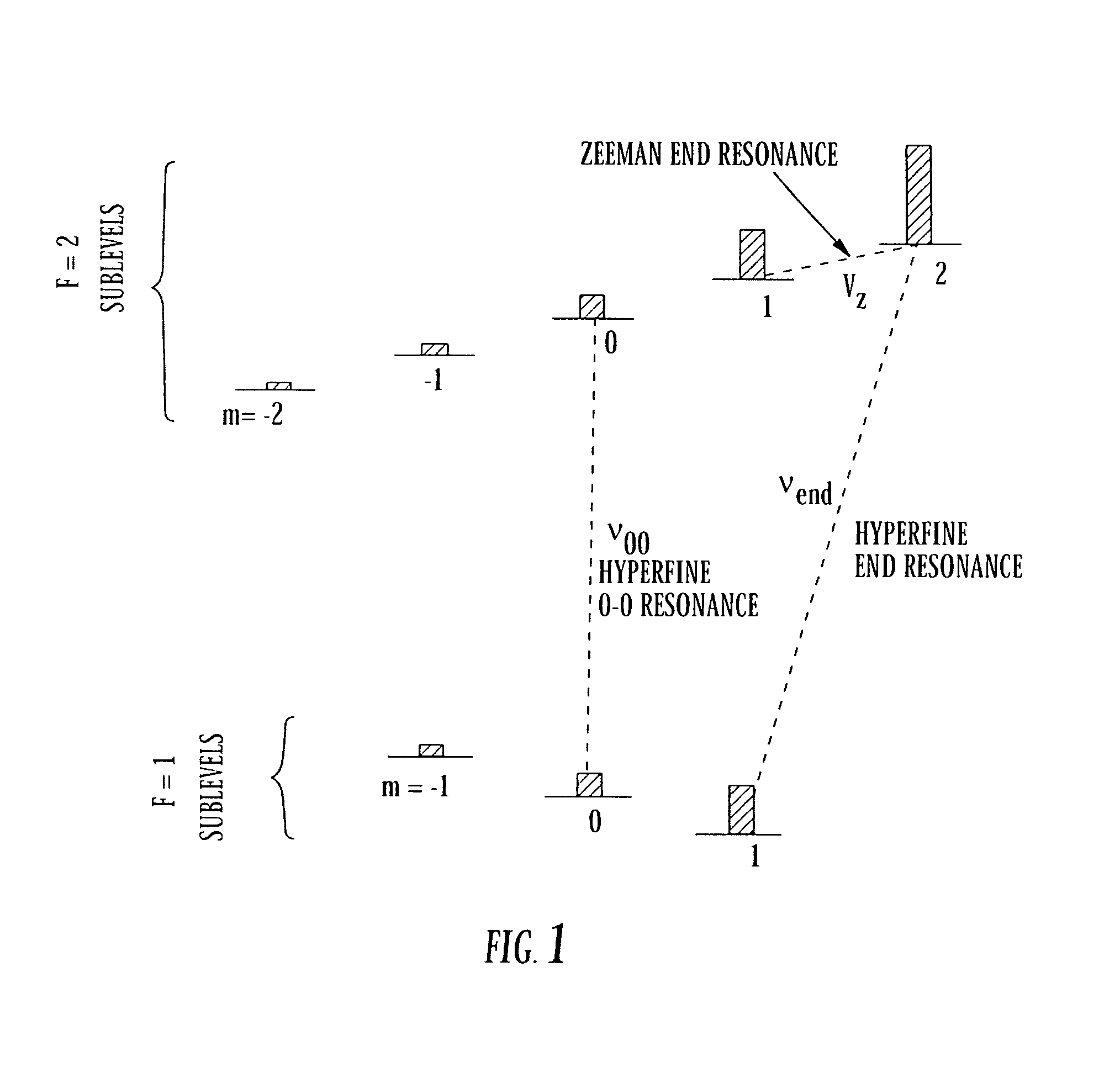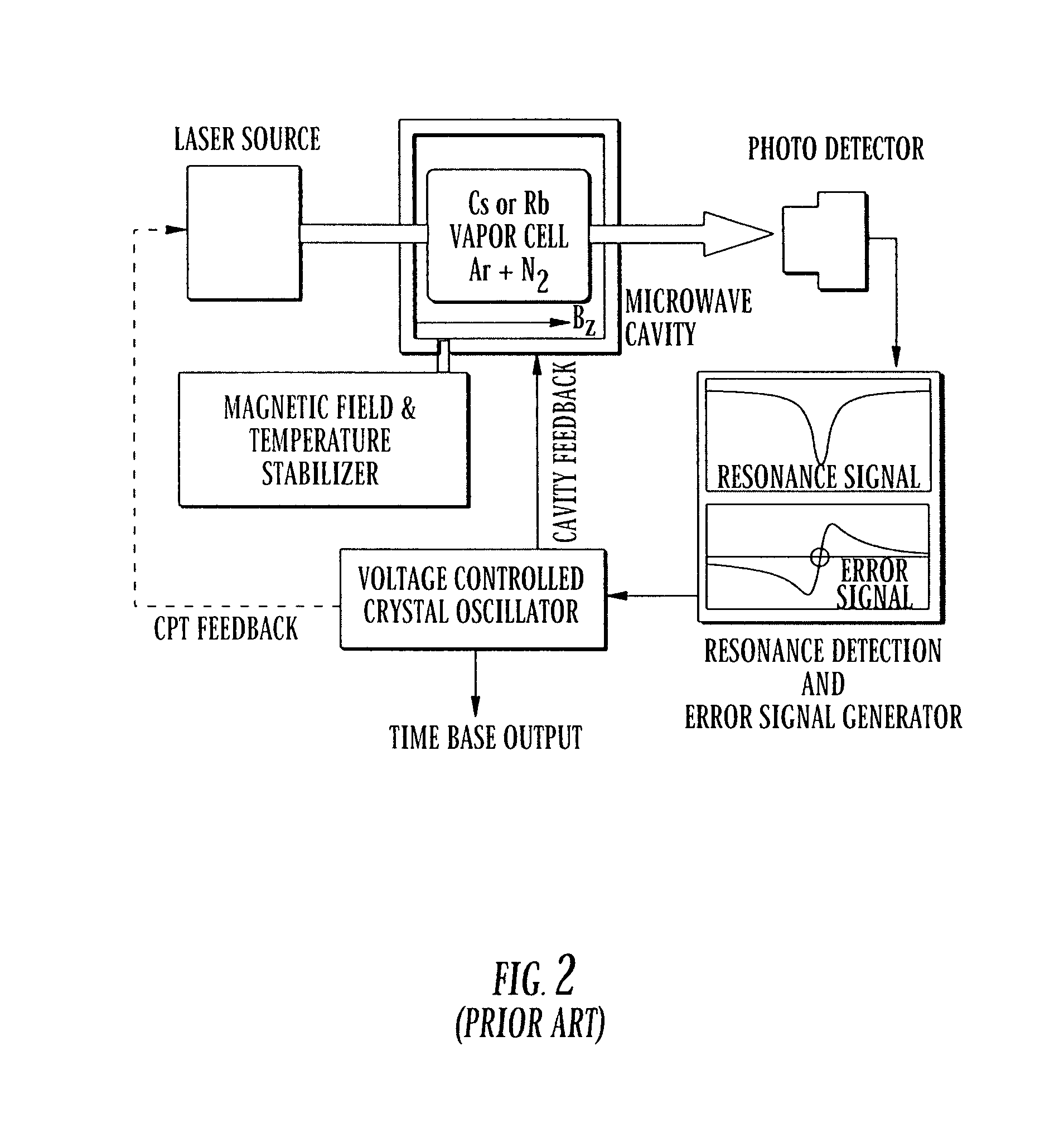Method and system for operating a laser self-modulated at alkali-metal atom hyperfine frequency
a laser and hyperfine frequency technology, applied in the field of pulse laser systems, optically pumped atomic magnetometers, optically pumped atomic clocks, etc., can solve the problems of reducing the utility of miniature atomic clocks, reducing the battery life, and cpt methods with fixed circularly polarized light and fm modulation suffer from the effects, so as to improve the performance of cpt atomic clocks and boost the cpt signal
- Summary
- Abstract
- Description
- Claims
- Application Information
AI Technical Summary
Benefits of technology
Problems solved by technology
Method used
Image
Examples
Embodiment Construction
[0026]Reference will now be made in greater detail to a preferred embodiment of the invention, an example of which is illustrated in the accompanying drawings. Wherever possible, the same reference numerals will be used throughout the drawings and the description to refer to the same or like parts.
[0027]FIG. 3 is a flow diagram of a method for operating an atomic clock or magnetometer 10 using a push pull pumping technique in accordance with the teachings of the present invention. In block 11, atoms are generated in a vapor phase or in an atomic beam, their ground state split by the electron-nuclear hyperfine interaction. The atomic vapor can be mixed with a buffer gas or gases, such as nitrogen or any of the noble gases, or a mixture thereof. A weak external magnetic field is needed to define the quantization direction at the location of the atoms. The quantum numbers F and m are used to label the ground-state sublevels of the alkali-metal atom. Here F is a quantum number of the to...
PUM
 Login to View More
Login to View More Abstract
Description
Claims
Application Information
 Login to View More
Login to View More - R&D
- Intellectual Property
- Life Sciences
- Materials
- Tech Scout
- Unparalleled Data Quality
- Higher Quality Content
- 60% Fewer Hallucinations
Browse by: Latest US Patents, China's latest patents, Technical Efficacy Thesaurus, Application Domain, Technology Topic, Popular Technical Reports.
© 2025 PatSnap. All rights reserved.Legal|Privacy policy|Modern Slavery Act Transparency Statement|Sitemap|About US| Contact US: help@patsnap.com



